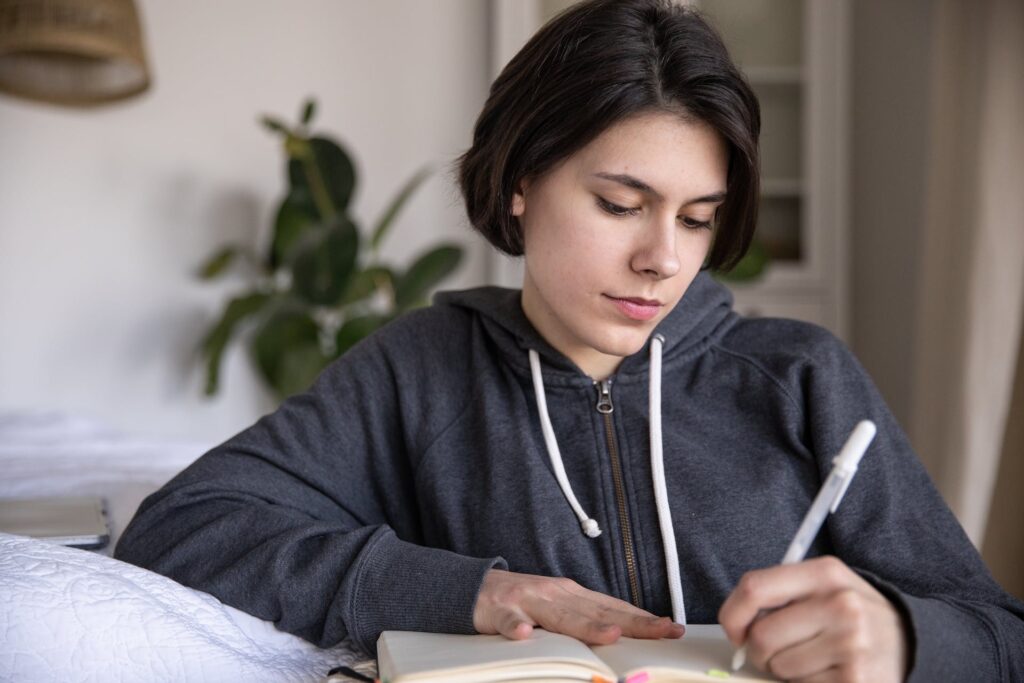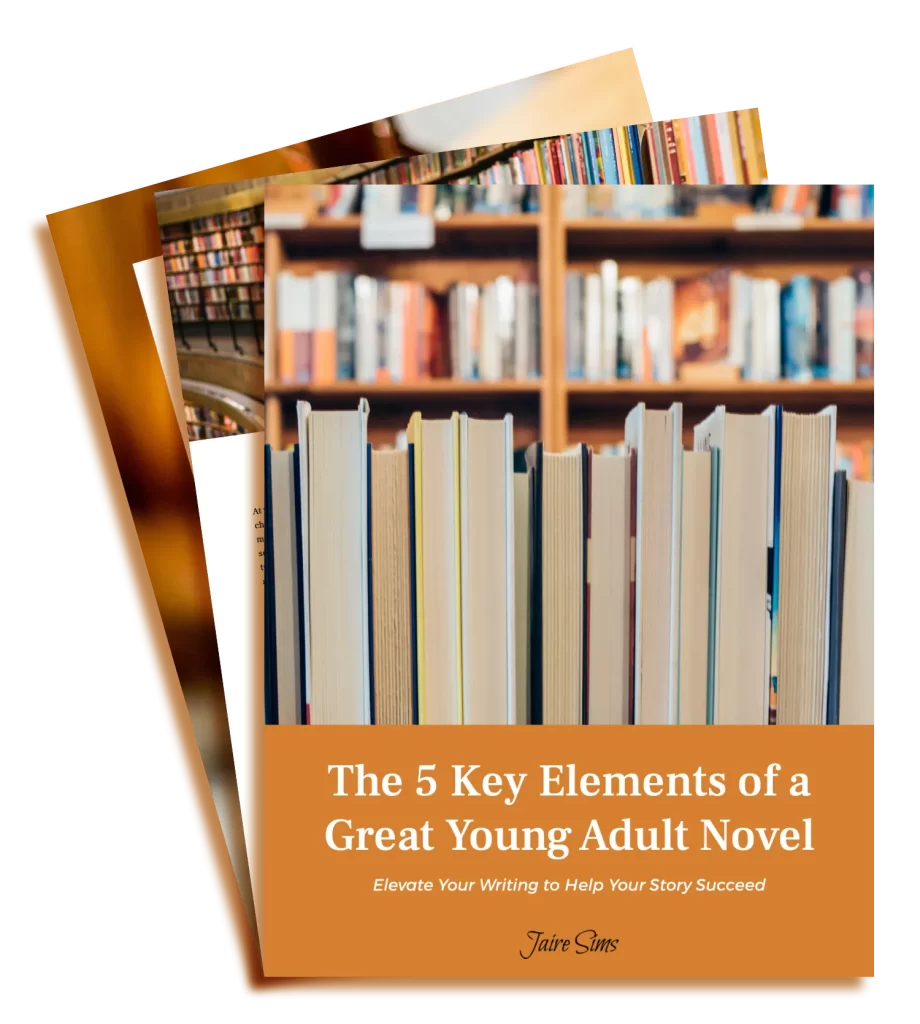Techniques for Vibrant YA Character Conversations
Are you struggling to write dialogue in your story? Here are some techniques for the best YA character conversations.
Crafting dialogue in YA fiction can be a daunting task, with the need to resonate deeply with readers. Ever felt the struggle of making your story truly come alive through conversations?
In this blog post, I’ll teach the secrets behind impactful dialogue, turning this challenge into a captivating strength for your YA narratives.
Keep reading to learn techniques for the best YA character conversations.
Section One: The Art of Authenticity

Crafting characters that live and breathe on the page is an art form every YA writer aspires to master. Today, let’s unpack the tools that will elevate your characters from mere words to living, breathing entities your readers can’t help but believe in.
Benefit: Crafting Characters Readers Believe In
The heartbeat of any compelling story lies in its characters. Readers want to connect, to feel like they’re stepping into the shoes of someone real. So, how do we make that happen? By ensuring our characters are not just figments of imagination but entities that resonate with authenticity.
Technique 1: Authentic Teen Dialogue
Let’s cut through the noise and get real. Teenagers speak a language that’s uniquely theirs – it’s a blend of slang, raw emotion, and a dash of wit. To craft authentic teen dialogue, immerse yourself in the way they communicate. Capture the nuances, the rhythm, and the essence of their conversations. When your characters talk the talk, readers will follow them anywhere.
Technique 2: Silence for Emotional Resonance
Ever heard the saying, “Sometimes silence speaks louder than words”? In YA fiction, the unspoken can be a powerful force. Use silence strategically. Let it linger in poignant moments, allowing readers to feel the weight of emotions without a single word. Silence becomes a canvas on which readers paint their interpretations, forging a connection that goes beyond dialogue.
Technique 3: Unveil Mysteries in Conversation
Engage your readers’ curiosity by weaving mysteries into your dialogues. Plant seeds of intrigue, drop subtle hints and let your characters dance around the unsaid. This added layer of complexity keeps readers hooked, eagerly turning pages to unravel the enigma you’ve crafted.
If you’d love to breathe life into your characters, let authenticity be your guide as you infuse dialogue with the very essence of your story.
Section 2: Dynamics that Drive the Story

In the vibrant world of YA fiction, the engine that propels your narrative forward is the dynamic interplay between characters. Let’s explore the techniques that will not only energize your plot but also keep your readers on the edge of their seats.
Benefit: Energizing Your Plot through Character Interactions
The heart of a compelling YA story beats with the energy generated by character interactions. This isn’t just about what characters say; it’s about the sparks that fly when personalities collide, the tension that builds, and the chemistry that keeps readers invested. Let’s dive into how to make your character dynamics pulse with life.
Technique 4: Conflict Catalysts
Inject a healthy dose of conflict into your story, for it is the spice that adds flavor to your narrative stew. Conflict is the catalyst that propels characters out of their comfort zones, steering your plot into uncharted territory. Explore the different shades of conflict – internal and external – and watch your story come alive with tension and excitement.
Technique 5: Revelation for Plot Twists
Plot twists are the fireworks of storytelling, and revelations are the sparks that set them off. Strategically unveil information, drop hints, and then, just when your readers think they’ve got it all figured out, hit them with a revelation that turns everything on its head. Keep them guessing, keep them hooked.
Added Technique: Backstory Threads for Character Depth
Characters aren’t just products of the present; they carry the weight of their pasts. Weave intricate backstory threads into your narrative tapestry. Explore characters’ histories, delve into their experiences, and watch as their depth adds layers to your story. Backstories are the secret sauce that transforms characters from two-dimensional to multidimensional.
The 5 Key Elements of a Great Young Adult Novel
Actionable Building Blocks to Set You on the Path to Success

Section 3: Building Bonds Through Words

Let’s unravel the techniques that not only forge bonds but leave a lasting imprint on your readers.
Benefit: Forging Lasting Connections
Connections between characters are the soul of your narrative. Readers crave those moments of intimacy, shared secrets, and laughter that bind characters together. As we dive into the techniques, keep in mind the ultimate goal – creating bonds that resonate beyond the pages.
Technique 6: Shared Secrets
There’s unparalleled magic in characters sharing secrets. It’s not just about the revelation itself but the trust and vulnerability it signifies. Explore the art of sharing secrets between characters, creating moments that invite readers into the inner circle, and fostering a connection that goes beyond observation.
Technique 7: Humor for Reader Engagement
Laughter is a universal language, and humor is the glue that binds readers to your story. Infuse your dialogue with wit, banter, and situational humor. A well-timed joke or a playful exchange not only engages readers but also humanizes your characters, making them relatable and endearing.
Added Technique: Shaping Dynamic Connections through Dialogue
Dialogue isn’t just a means of communication; it’s the tool that sculpts relationships. Explore how the nuances of dialogue can shape dynamic connections between characters.
Section 4: Beyond Words – Non-Verbal Mastery

Benefit: Communicating Beyond Speech
The power of communication extends far beyond words. Characters express, connect, and reveal through non-verbal cues, painting a richer picture of your narrative. In this section, we’ll unravel the benefits of harnessing the unspoken in your storytelling.
Technique 8: Body Talk
Our bodies are storytellers in themselves. Explore the nuances of body language – the subtle gestures, expressions, and postures that speak volumes. Learn how to use body talk to convey emotions, intentions, and conflicts, adding a visual dimension to your narrative that captivates readers.
Technique 9: Subtext for Depth
Subtext is the unsung hero of storytelling. It’s the layer beneath the surface, the unspoken thoughts and feelings that add complexity to your characters and plot. Dive into the art of subtext, using it to create tension, build suspense, and give readers a glimpse into the hidden layers of your story.
Added Technique: Infusing the World into Everyday Conversations
Elevate your dialogue by infusing the world into everyday conversations. Let the setting, culture, and atmosphere play an active role in how characters interact. The world around them becomes a silent participant in the dialogue, enriching your narrative with a sense of place and atmosphere.
Summary of Techniques for the Best YA Character Conversations

As I wrap up, let’s recap the essential techniques for best YA character conversations that will breathe life into your dialogues and characters.
1. Authentic Teen Dialogue: Speak the language of your characters, capturing the unique rhythm and essence of teen communication.
2. Silence for Emotional Resonance: Use pauses and unspoken moments to create emotional depth and connection.
3. Conflict Catalysts: Inject conflict into your plot to propel characters into uncharted territory and keep readers engaged.
4. Revelation for Plot Twists: Strategically unveil information to deliver impactful plot twists and keep your audience guessing.
5. Shared Secrets: Forge connections through the magic of characters sharing intimate secrets.
6. Humor for Reader Engagement: Infuse wit and humor into your dialogue, creating relatable and endearing characters.
7. Body Talk: Explore the nuances of body language to convey emotions and add a visual dimension to your narrative.
8. Subtext for Depth: Dive into the unsaid thoughts and feelings, adding complexity and intrigue to your characters.
9. Infusing the World into Conversations: Enrich your dialogue by incorporating the setting, culture, and atmosphere.
Now, armed with these techniques for the best YA character conversations, it’s time to bring your characters to life. Apply what you’ve learned, experiment, and let your characters shine with authenticity, depth, and connection.
Happy Writing!







